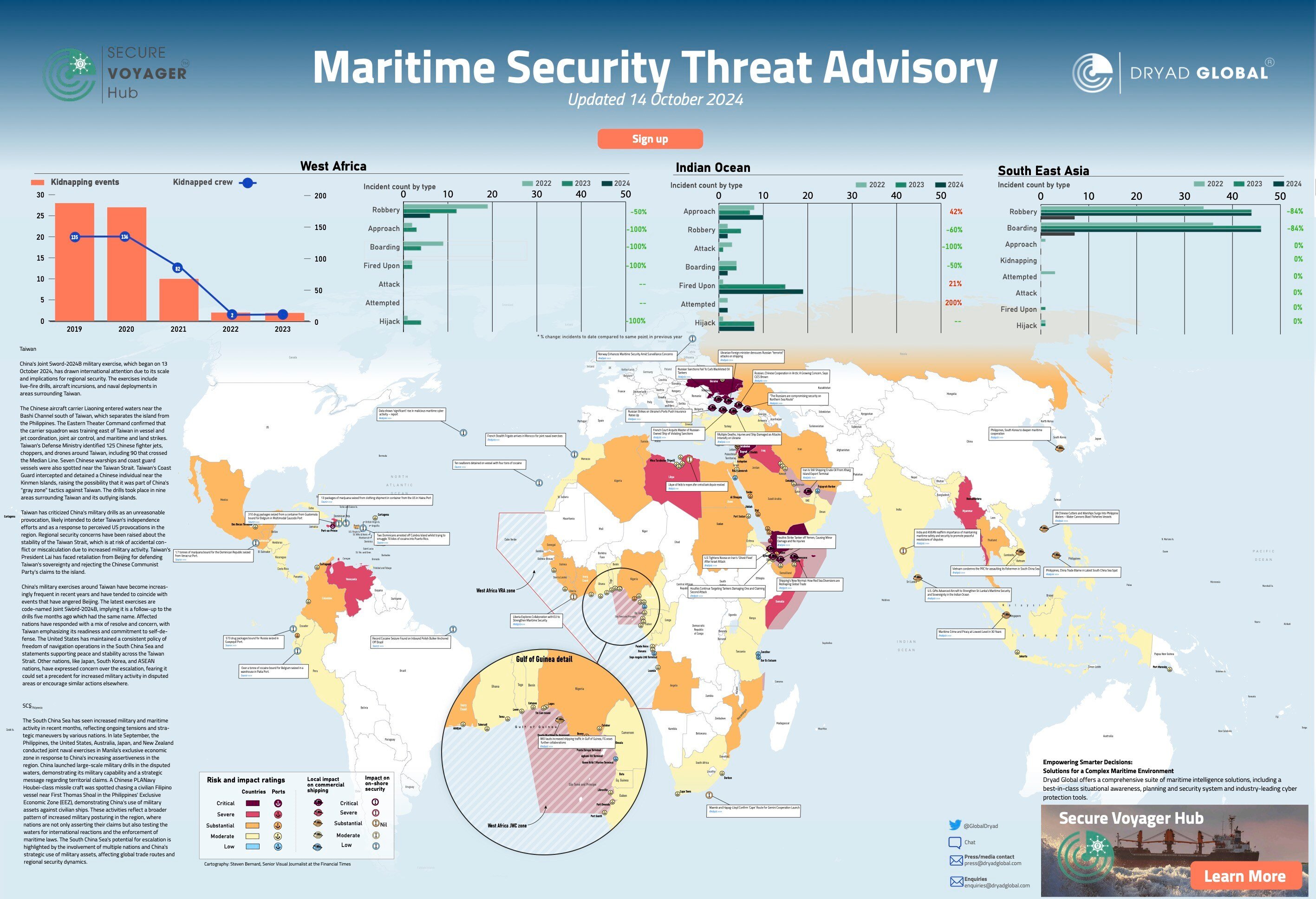Dryad Global's weekly Maritime Security Threat Analysis is available now. This week our team of analysts focus on the China, Taiwan, South China Sea areas following the start of China's Joint Sword-2024B military exercise.The exercises, viewed as a response to Taiwan's independence efforts and U.S. involvement in the region, have sparked concerns over potential conflict and heightened instability in the Taiwan Strait.
China's Joint Sword-2024B military exercise, which began on 13 October 2024, has captured global attention for its implications on regional security. These exercises, including live-fire drills and naval maneuvers, have taken place in areas surrounding Taiwan. The Chinese aircraft carrier Liaoning entered waters near the Bashi Channel, while Taiwan's Defense Ministry reported over 120 aircraft and several warships operating near Taiwan.
Taiwan has condemned the drills as provocative, likely intended to dissuade independence movements and in response to perceived U.S. actions in the region. Increased military activity has heightened concerns over the risk of accidental conflict in the Taiwan Strait.
The U.S. and other regional actors, such as Japan and South Korea, have expressed concerns, with the U.S. maintaining a policy of freedom of navigation in the area. Meanwhile, the South China Sea has also seen a rise in military actions, further reflecting the ongoing strategic tensions involving China and its territorial ambitions.
These developments highlight the growing instability in the region, with broader implications for global trade and security.
Read our latest analysis by subscribing to our weekly Maritime Security Threat Analysis (MSTA) reporting:





